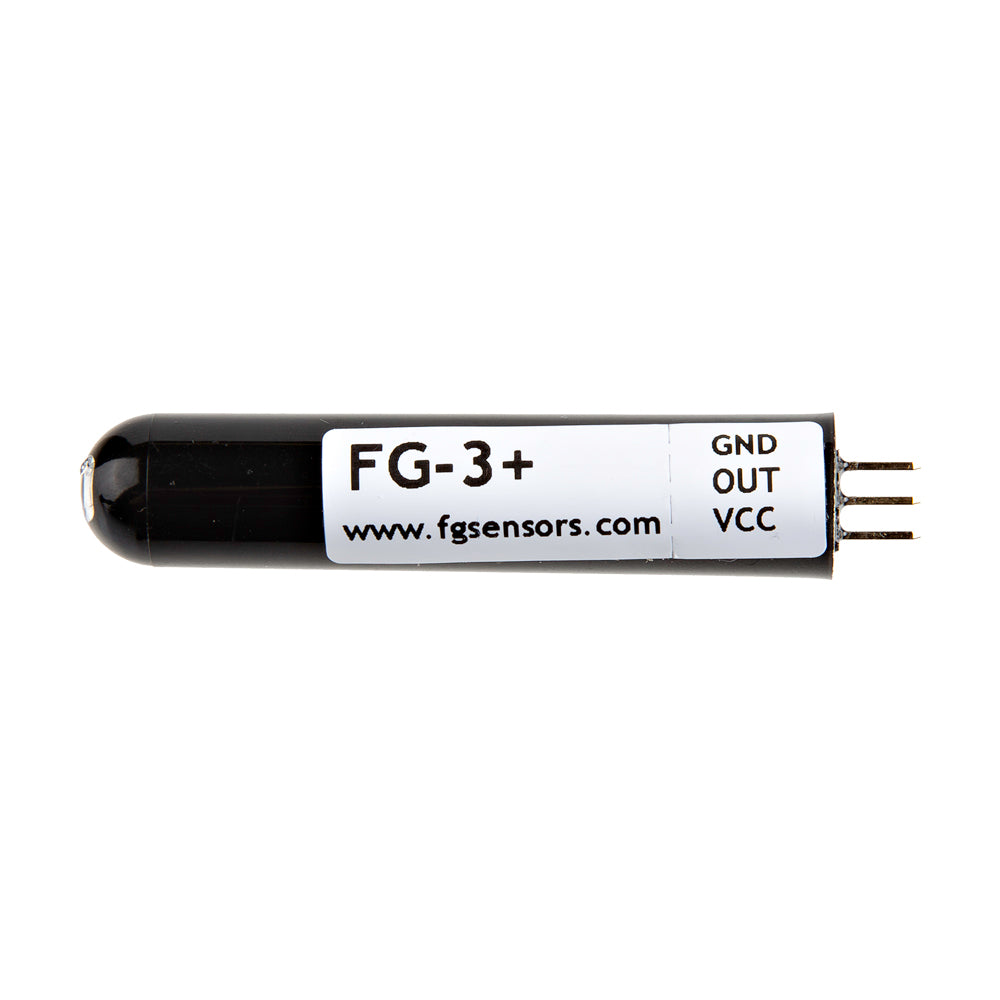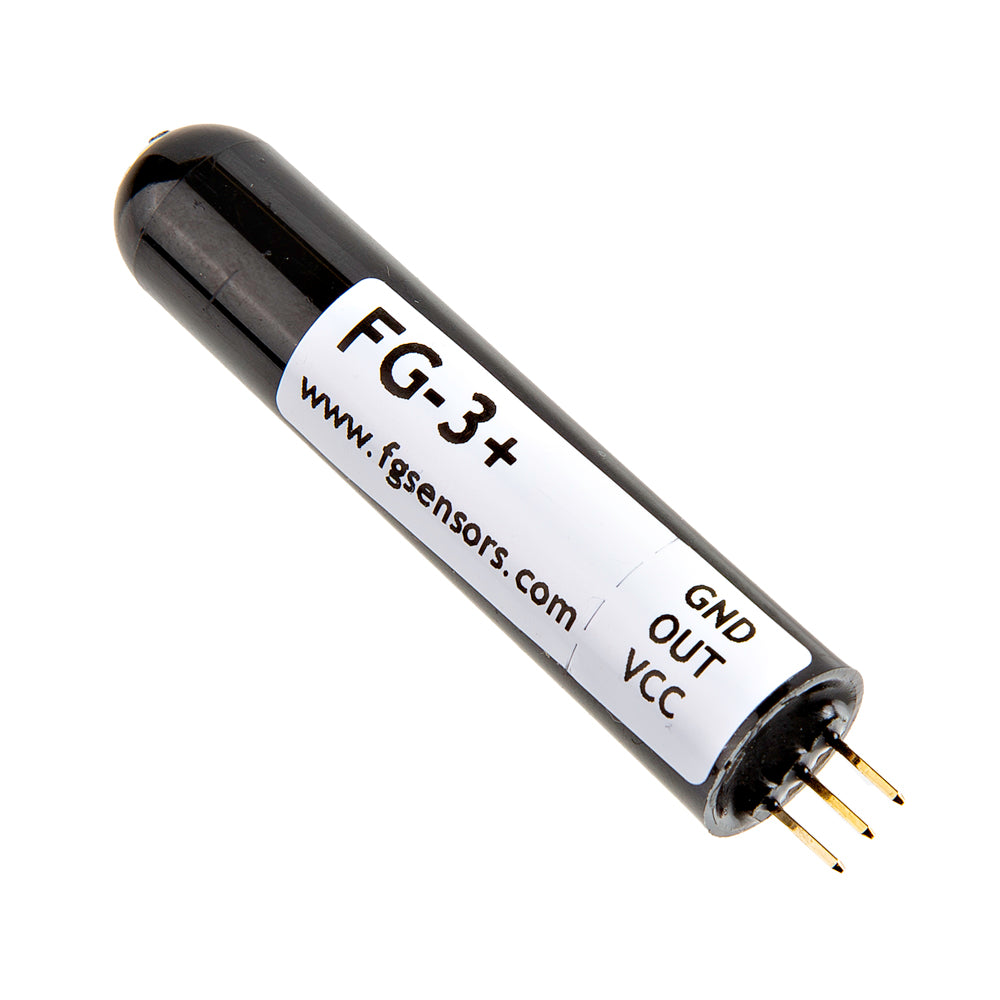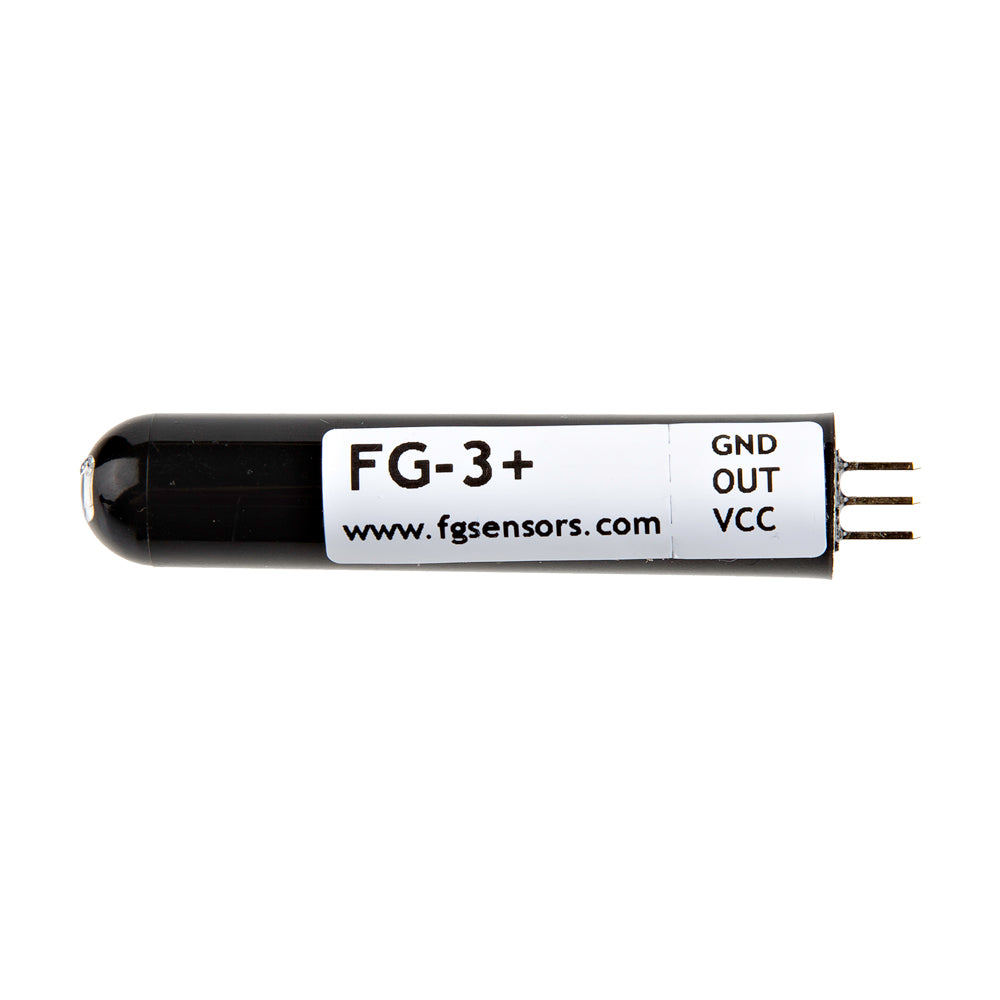The FGM - X series offers high - sensitivity magnetic field sensors that work in the ±50 microtesla (±0.5 oersted) range. These simple three - terminal devices run on a single +5 volt supply, with connections for ground, +5v, and output. The output is a strong 5 - volt rectangular pulse. Its period is directly related to the field strength, so the frequency varies inversely with the field, making it super easy to connect to a computer or micro - controller. For the FGM - 3, the typical period swing across the full range is from 8.5 μs to 25μs (about 120 KHz to about 50KHz), showing its high sensitivity. Unlike Hall Effect field sensors, which aren't useful in this range due to high temperature sensitivity, the FGM - series has a very low temperature coefficient. With a lowest effective Nyquist sampling rate of about 50 KHz, proper filtering can give an AC field bandwidth from DC to about 20kHz.



Using this FGSensors FG - 3+ Sensor is straightforward. First, connect it to a +5 volt power supply, making sure to connect the ground, +5v, and output terminals correctly. Once connected, it will start detecting magnetic fields in the ±50 microtesla range. To interface it with a computer or micro - controller, just use the output signal which is a 5 - volt rectangular pulse. When using, be aware that while it has a low temperature coefficient, extreme temperature changes might still affect its performance slightly. For maintenance, keep it in a clean and dry environment. Avoid exposing it to strong magnetic fields outside its specified range as this could damage the sensor. If you notice any abnormal output, check the connections first and then consider replacing the sensor if the issue persists.